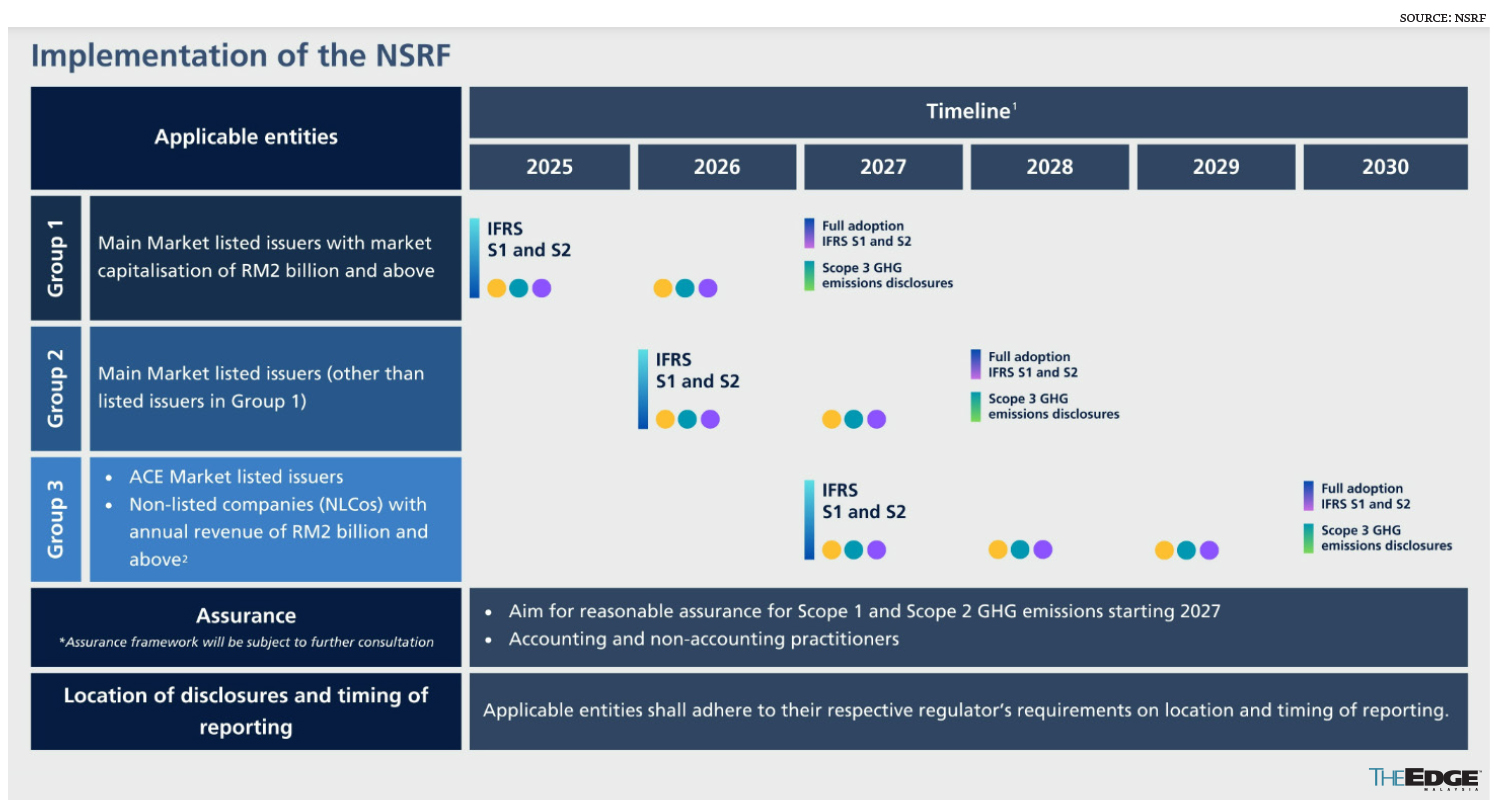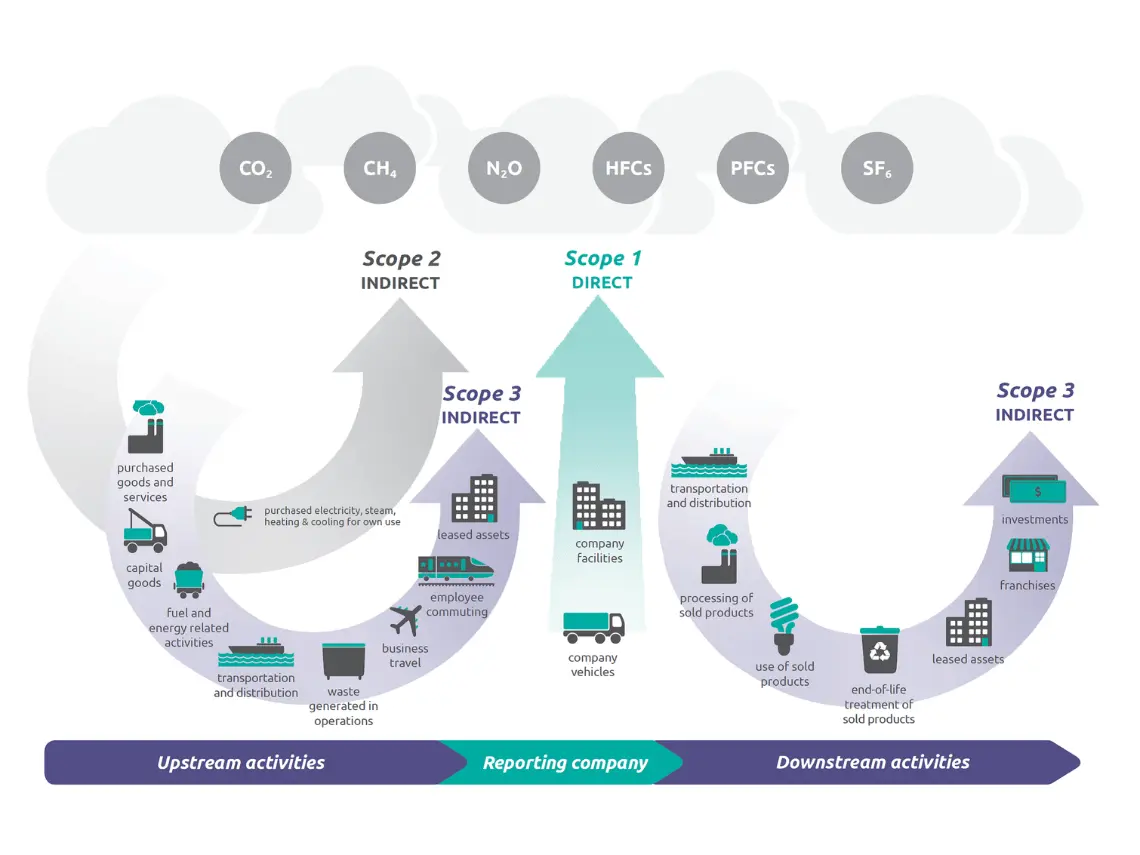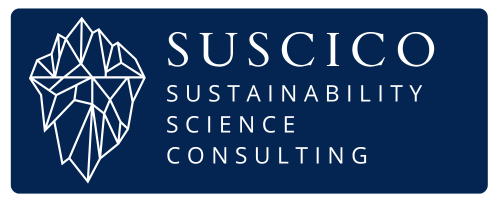NEW GRI Climate Standards: ESG Reporting Guideline for Malaysian SMEs
- 27/06/2025
- Posted by: Ildar Usmanov
- Category: ESG Reports

NEW GRI Climate Standards: The landscape of ESG reporting for SMEs is rapidly evolving. For Malaysian businesses committed to sustainability, understanding the latest Global Reporting Initiative (GRI) updates is crucial. This guide provides a comprehensive overview of the new GRI Climate Standards (GRI 102 and GRI 103), offering practical steps for integration into your 2024 ESG report.
By adopting these standards, your company can achieve actionable and streamlined reporting on its climate and energy impacts. This will meet the growing demands of investors, customers, and regulators for transparent carbon emissions reporting and energy management reporting.
Understanding GRI’s New Climate & Energy Standards
In June 2025, GRI launched two significant Topic Standards focusing on climate change and energy impacts. These are GRI 102: Climate Change 2025 and GRI 103: Energy 2025. Together, they form a robust framework for organizations to report on greenhouse gas (GHG) emissions, climate strategies, and energy use.
What’s New in GRI 102 & 103?
- GRI 102: Climate Change 2025 emphasizes achieving significant GHG emissions reductions, aligning with science-based targets and global climate goals. It introduces “just transition” metrics, covering social impacts on workers, local communities, and Indigenous Peoples. This standard is key for your carbon emissions reporting.
- GRI 103: Energy 2025 addresses all energy-related impacts. This includes decarbonization efforts, consumption of renewable vs. non-renewable energy, and details on how energy reductions are achieved. It positions energy management as central to climate change mitigation. This is vital for comprehensive energy management reporting.
Both standards are grounded in scientific consensus, aligning with frameworks like the GHG Protocol. This ensures that reported information is decision-useful and relevant for a wide range of stakeholders.
Replacing Older GRI Environmental Standards
The introduction of GRI 102 and GRI 103 updates and replaces several older GRI topic-specific environmental standards.
- GRI 102: Climate Change 2025 builds on and replaces key disclosures from GRI 305: Emissions 2016. It also takes over climate-related risk disclosure from GRI 201: Economic Performance (Disclosure 201-2). The traditional GRI 305 indicators for GHG emissions (Scope 1, 2, 3) are now integrated into the new GRI 102.
- GRI 103: Energy 2025 substantially updates and will supersede GRI 302: Energy 2016. It expands upon earlier energy disclosures like energy consumption, reduction, and mix.
These changes ensure that climate and energy disclosures reflect the latest best practices and international agreements, such as the Paris Agreement and IPCC guidance. Organizations familiar with the GRI framework should transition to using GRI 102 and 103 for climate change and energy reporting going forward.
Interoperability: GRI & Other Frameworks
A key feature of these new GRI Climate Standards is their interoperability with other major reporting frameworks. For instance, GRI 102 complements the investor-focused IFRS S2 Climate-related Disclosures standard.
This means organizations can use the same climate data (e.g., Scope 1, 2, and 3 emissions) to satisfy both GRI and IFRS requirements. This alignment helps companies avoid duplicate reporting. You can measure emissions once (following GHG Protocol methods) and reference that disclosure in the GRI content index, meeting both GRI and ISSB (IFRS S2) expectations.

Why Malaysian SMEs Should Adopt GRI Climate Standards Now
While the new GRI Climate Standards were published in mid-2025 and are expected to become mandatory for GRI reports by January 1, 2027, early adoption is encouraged. For Malaysian SMEs preparing their 2024 ESG report, aligning with GRI 102 and 103 now is highly advisable. This ensures your report is forward-looking and aligns with the latest GRI framework, rather than outdated standards like GRI 305 or 302.
ESG reporting for SMEs is gaining importance in Malaysia due to increasing pressure from supply chains, financial institutions, and evolving regulatory environments. Adopting these GRI Climate Standards positions your business as forward-thinking and responsive to stakeholder needs. It enhances your company’s reputation and prepares you for future demands.
Step-by-Step Guide for 2024 ESG Reporting
Integrating the new GRI Climate Standards into your 2024 ESG report can be a structured, stepwise process for Malaysian SMEs.
- Understand & Determine Materiality
Begin by reviewing GRI 102 and GRI 103 to grasp their disclosure requirements. GRI 102 covers climate governance, strategy, targets, emissions, and impacts on people (just transition). GRI 103 addresses energy use and efficiency.
Determine if these topics are material for your company. Given climate change’s universal importance, most organizations will find GHG emissions or energy consumption significant. If climate change significantly impacts or is impacted by your operations, plan to report using these standards. Even smaller companies should generally treat energy use and associated emissions as material.
- Map Applicable Disclosures
Once climate change and/or energy are confirmed as material, map the specific disclosures from GRI 102 and 103 that you need to report.
- For GRI 102: You’ll need to disclose Scope 1, 2, and (if significant) Scope 3 GHG emissions, GHG reduction targets, climate transition plans, and adaptation measures.
- For GRI 103: Disclose total energy consumption, the share of renewable vs. non-renewable energy, and energy efficiency initiatives.
Compare these new requirements with previous reporting under GRI 305 or 302 to identify any gaps. For example, GRI 102 introduces “just transition” information and carbon credit usage, which SMEs may not have reported before.
- Collect Data & Build Capacity
Start gathering the data required for the new disclosures.
- For GRI 102 (Climate Change): Ensure an accurate inventory of GHG emissions. Collect data on fuel use, electricity consumption, and travel, then calculate emissions using the GHG Protocol methodology. SMEs can start with significant emission sources like electricity and fuel.
- For GRI 103 (Energy): Compile data on energy consumption (in joules, kWh) broken down by source (electricity, gas, diesel) and renewables vs. non-renewables. Set up simple tracking systems (e.g., utility bills, fuel records) if you haven’t before.
GRI provides resources like FAQs for GRI 102/103 and a “Climate Reporting with GRI and IFRS” course via the GRI Academy. These can help your team measure and report indicators.
- Develop Climate Strategies & Targets
The new GRI Climate Standards expect organizations to discuss their climate change mitigation strategy and targets.
- Climate Transition Plan: Formulate a basic climate transition plan outlining how your company intends to reduce GHG emissions over time. This could include a GHG reduction goal (e.g., X% reduction by 2030, aligned with climate science) and planned actions like energy efficiency, renewable energy switching, or fleet upgrades.
- Climate Adaptation: Address climate-related risks to your operations (e.g., floods, heatwaves). GRI 102 asks for disclosure of any adaptation plan or measures, even a simple narrative about insurance or supply chain diversification.
- Incorporate Just Transition & Social Impacts
Uniquely, GRI 102 integrates “just transition” principles. Companies should report how their climate actions impact people – employees, communities, and Indigenous peoples.
- Workforce Implications: Describe workforce impacts of climate initiatives. For example, will staff require retraining for new machinery? How will you support affected workers during shifts to cleaner technology?
- Community Impacts: Consider positive impacts on local communities, like improved air quality from reduced emissions.
GRI 102 includes a dedicated disclosure on just transition (102-3), potentially asking for metrics like jobs created or retraining provided. Qualitative descriptions are also valuable for SMEs.
- Align Reporting Structure & Content Index
Structure your climate and energy content according to GRI 102 and 103 requirements in your ESG report. Dedicate sections to “Climate Change (GRI 102)” and “Energy (GRI 103),” with sub-sections for governance, strategy, targets, emissions, and impacts.
In your GRI Content Index, list GRI 102 and 103 with corresponding page references. If transitioning from GRI 305/302, note the adoption of the new standards. You can also cross-reference IFRS S2 disclosures if prepared, as they count towards GRI 102.
- Review and Assurance for Credibility
Before finalizing, review GRI 102 and 103 FAQ documents and guidance to ensure all requirements are met. These FAQs clarify common questions, such as reporting carbon credit usage and emissions targets.
If resources permit, consider external review or assurance for GHG data. An internal audit or peer review can also boost data confidence. Plan for continuous improvement, noting in your report that 2024 is your first year aligning with the new GRI Climate Standards and that you intend to enhance future disclosures.
By following these steps, a Malaysian SME can methodically integrate these new climate standards into its 2024 sustainability report. Start small with foundational data (emissions, energy), then add narrative on targets, plans, and impacts on people.

Key Climate & Energy Disclosures for SMEs
Under the new GRI Climate Standards (GRI 102 and GRI 103), several key disclosures are crucial for SMEs to meet stakeholder expectations.
- GHG Emissions (Scope 1, 2, and 3): Report your direct (Scope 1) and energy indirect (Scope 2) emissions. Include other indirect (Scope 3) GHG emissions if significant. Measure in metric tons of CO₂ equivalent, following the GHG Protocol methodology for transparency. Provide a breakdown by scope (e.g., fuel combustion, electricity usage, business travel). If Scope 3 is limited, report relevant categories like business travel for service SMEs or product distribution for manufacturing. These are crucial for carbon emissions reporting.
- Previously GRI 305-1, 305-2, 305-3, now in GRI 102.
- GHG Emissions Reduction Targets and Progress: Disclose any climate-related targets, such as reducing Scope 1 and 2 emissions by X% by 2030. Describe the target (base year, target year, absolute or intensity-based) and report progress. Note if your target aligns with science-based criteria or national goals.
- Built on old GRI 305-5, now in GRI 102.
- Climate Change Mitigation Transition Plan: Provide an overview of your organization’s transition plan for climate change mitigation. Describe policies and actions to reduce carbon emissions short, medium, and long-term. Examples include energy efficiency upgrades, solar panel installation, or shifting to electric vehicles. Mention how your plan aligns with climate goals (e.g., 1.5°C warming limit). Integrate just transition metrics, noting how you consider workforce and communities.
- New required disclosure in GRI 102.
- Climate Change Adaptation Measures: If climate change poses identifiable business risks, GRI 102 expects disclosure on your adaptation plan or actions. Discuss steps taken to adapt, such as strengthening infrastructure or diversifying suppliers for extreme weather. For SMEs, simpler responses are acceptable, but demonstrate thoughtful resilience.
- New disclosure in GRI 102.
- Just Transition and Social Impact Disclosures: A distinguishing feature of GRI 102. Disclose if jobs or roles are affected by climate action (e.g., “number of employees retrained for new low-carbon skills”) and how changes are managed fairly. Include community initiatives or worker engagement in climate programs.
- Specific indicators in GRI 102, e.g., 102-3.
- Energy Consumption and Mix: Under GRI 103 (Energy), report total organizational energy consumption for the year (e.g., in gigajoules or kWh). Break down by source (electricity, fuel, renewable energy). Indicate the portion of energy from renewable sources. Include any energy intensity metrics and energy reduction initiatives (e.g., “reduced electricity by 5% through motion sensor lighting”). These details contribute to robust energy management reporting.
- Decarbonization and Efficiency Efforts: GRI 103 encourages discussion of decarbonization. Highlight efforts like switching to cleaner fuels, onsite renewable generation, or participating in green power programs. Mention key findings and actions from energy audits.
- Use of Carbon Credits or Offsets (if applicable): If your SME uses carbon offsets or renewable energy certificates, GRI 102 requires transparency. Disclose the volume offset, type of offsets, and quality criteria. Clearly state that offsets supplement direct reduction efforts. If no offsets are used, you can omit this or state your focus on direct reductions.
- New emphasis in GRI 102.
Each of these disclosures aligns with the new GRI Climate Standards and provides a structured way for Malaysian SMEs to communicate their climate and energy performance. Using visuals like charts for emissions trends is encouraged, provided data is detailed in text or tables with GRI labels.
Practical Considerations for SMEs
Adopting GRI’s new GRI Climate Standards as an SME comes with specific considerations for effective reporting.
Materiality and Proportionality
SMEs should apply the concept of materiality to focus on their most significant impacts. Report comprehensively on climate and energy topics if they are among your largest environmental impacts. Be transparent about less relevant areas. For most companies, at least energy use and associated emissions should be treated as material.
Data Accuracy vs. Estimation
Sophisticated data gathering systems may not be available to all SMEs for GHG and energy information. It’s acceptable to use reasonable estimates or industry averages when precise data is unavailable, but disclose this methodology. Aim to improve data accuracy over time. Transparency about data quality builds credibility.
Resource Constraints & Gradual Implementation
Implementing new reporting standards can be resource-intensive for SMEs with limited sustainability staff. Prioritize by starting with easier data points like electricity and fuel measurement. Gradually tackle more complex tasks like Scope 3 emissions or climate scenario analysis in later cycles.
Leverage existing roles (e.g., operations, finance) for data collection or consider assigning a cross-functional team. External help from industry associations or local sustainability initiatives can also be beneficial. Learn more about ESG reporting for SMEs
Utilizing GRI Support & Community
GRI offers support specifically designed to ease new standard adoption for SMEs. Access FAQs for GRI 102 and 103 for definitions and reporting clarity. The GRI community and early adopter programs (with case studies) can provide valuable peer learning. Remember, GRI Climate Standards are designed for all organization sizes, including SMEs.
Stakeholder Communication & Value
Beyond compliance, integrating these GRI Climate Standards is about communicating your company’s sustainability story. Stakeholders are increasingly interested in climate-related information. Using the recognized GRI framework lends credibility and provides a common language for readers.
Emphasize the value of your actions, such as cost savings from energy efficiency or risk reduction from adaptation. Robust climate reporting can enhance your reputation, meet client requests (e.g., for carbon emissions reporting from suppliers), and prepare you for future regulations in sustainability reporting Malaysia.
Future Outlook & Continuous Improvement
The field of sustainability reporting is rapidly evolving. Acknowledge future plans in your report, such as exploring renewable energy or improving Scope 3 tracking. This shows you are keeping pace.
GRI 102 and 103 are part of broader GRI Standards updates, with sector-specific standards also aligning. Stay informed on these changes. Early adoption in 2024 will make future reporting easier and more robust as expectations tighten towards the mandatory effective date (likely 2026 or 2027).
Who Should Report Using the New GRI Climate Standards?
The new GRI Climate Standards are intended for universal use. Any organization preparing a sustainability or ESG report in accordance with GRI Standards should use GRI 102 and 103 if climate change or energy is a material topic. Given climate change’s pervasive nature, this applies to the vast majority of companies across all industries.
Whether you are in manufacturing, services, or transportation, if your operations lead to GHG emissions or energy consumption (direct or through your value chain), these new standards are applicable. GRI has aligned all its Sector Standards with the new climate and biodiversity standards to ensure consistency.
GRI Standards are scalable, making them suitable for both large multinational corporations and SMEs. There is growing pressure for smaller companies to report sustainability data, and GRI provides a trusted framework for this. While GRI adoption is voluntary, using these new GRI Climate Standards on a voluntary basis now is encouraged. By their official effective date, they will be the norm for any GRI report referencing climate topics. Explore our carbon accounting services
Regulators in some regions primarily demand climate disclosures from large companies, but these requirements often cascade to SMEs indirectly through client requests or national policies. An SME adopting GRI 102/103 positions itself as forward-thinking and responsive to stakeholder needs.
GRI’s guidance suggests broad uptake, implying all companies can benefit. The modular and topic-specific nature of GRI standards means a smaller company can focus on key topics like GRI 102 and 103 without needing a voluminous report on everything. This flexibility makes the new GRI Climate Standards applicable to any organization serious about managing and disclosing its climate impact, regardless of size or sector.
Conclusion: Your Pathway to Impactful Sustainability Reporting
The release of GRI’s new Climate Change (102) and Energy (103) Standards represents a significant leap forward in sustainability reporting. They aim to make climate disclosures more actionable, comparable, and holistic. For Malaysian SMEs preparing their 2024 ESG report, integrating these standards offers both a challenge and a significant opportunity.
It’s a challenge because it requires updating practices and gathering robust data. However, it’s also an opportunity to clearly tell your climate impact story in line with global expectations. By replacing outdated metrics with this streamlined framework, your organization can better demonstrate accountability for its environmental footprint and show alignment with international climate goals.
Embracing the new GRI Climate Standards is a blueprint for credible climate and energy reporting. This will not only meet the evolving demands of regulators and business partners but also help your company contribute to, and benefit from, the transition to a more sustainable, low-carbon economy. With careful planning, stakeholder engagement, and use of available guidance, even smaller companies can unlock the value of “actionable and streamlined reporting on impacts” that GRI 102 and 103 were designed to deliver.
SuSciCo helps SMEs in implementing Sustainability Practices
At SuSciCo, we help companies implement a Customer-Centric Sustainability approach by integrating ESG principles into their strategies. Our services include GHG management, sustainability reporting (GRI, IFRS, Bursa Malaysia), supply chain optimization, and ISO 14001 EMS development. We offer PCF and LCA assessments, sustainable procurement strategies, and waste management solutions to align products and operations with customer expectations. Through tailored ESG training and stakeholder engagement, we empower businesses to reduce environmental impacts, foster innovation, and build trust for sustainable growth.



